The simple genius of checklists, from B-17 to the Apollo missions
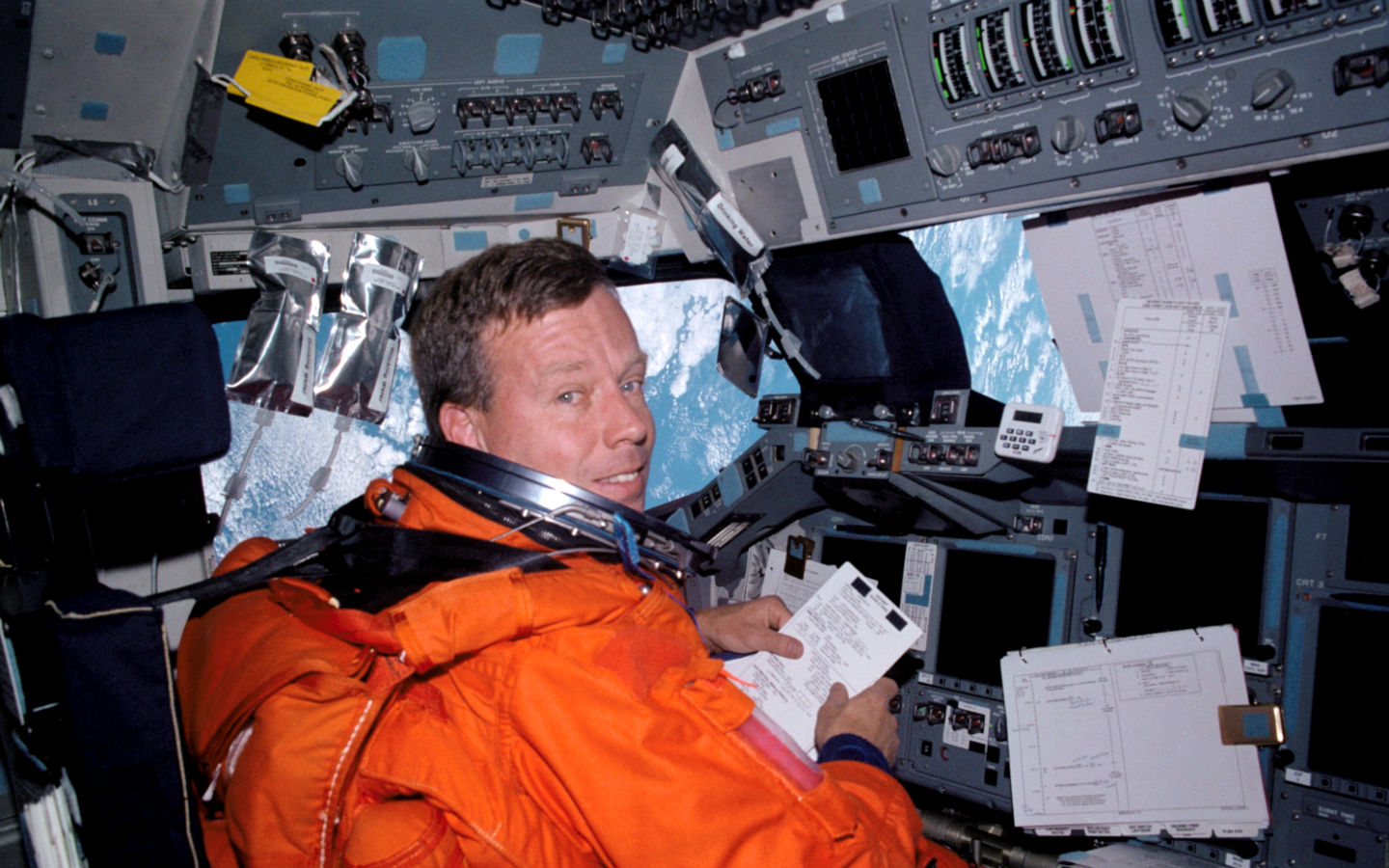
“Why do I love checklists? Because rather than letting my imagination run amok to my detriment, effective use of checklists allows me to direct my imagination to more productive purposes.”
— David Oberhettinger, the Chief Knowledge Officer of the Jet Propulsion Lab, NASA
The year is 1935, and the U.S. Army Air Corps is holding a competition for airplane manufacturers vying to secure a contract to build the military’s next long-range bomber.
Boeing unveils their state-of-the-art airplane B-299, later known as the B-17 Flying Fortress. A stunning design, in perfect working order. The test pilots are experienced and well-trained. They add power for takeoff, become airborne...
And then abruptly crash after climbing only a few hundred feet.
The checklist that started it all
The crash wasn’t caused by a design flaw, but rather a pilot error. While the new bomber could fly faster and further than any other, it was also very complex to operate. The pilot had to keep track of four different engines, the wing flaps, the landing gear, and much more. Preoccupied, he simply forgot to disengage a new locking mechanism on the elevator and rudder controls.
Instead of making the pilots undergo further training, however, Boeing came up with a simple yet ingenious solution – a pilot checklist.
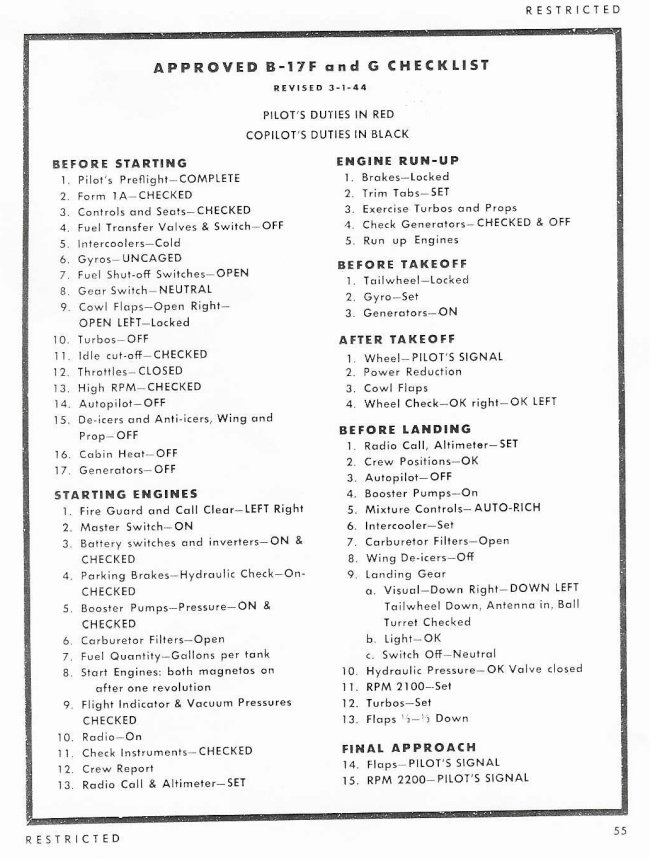
It spelled out all the basic – even obvious – tasks that were needed to fly the plane successfully. It was almost stupidly simple. Armed with the checklist, the pilots went on to fly the B-17 1.8 million miles without a single accident. The Army ended up ordering over 13,000 units, which became one of the most recognizable heavy bombers of World War II.
The “fourth crew member” of the Apollo missions
The lessons learned during the test flight of the B-17 bomber prototype put a start to a best practice that became an integral part of safety culture at NASA.
Checklists proliferated to every corner of habitable environment of Apollo 11 and became what astronaut Michael Collins called the spacecraft’s “fourth crew member” – and, for all intents and purposes, its real commander.
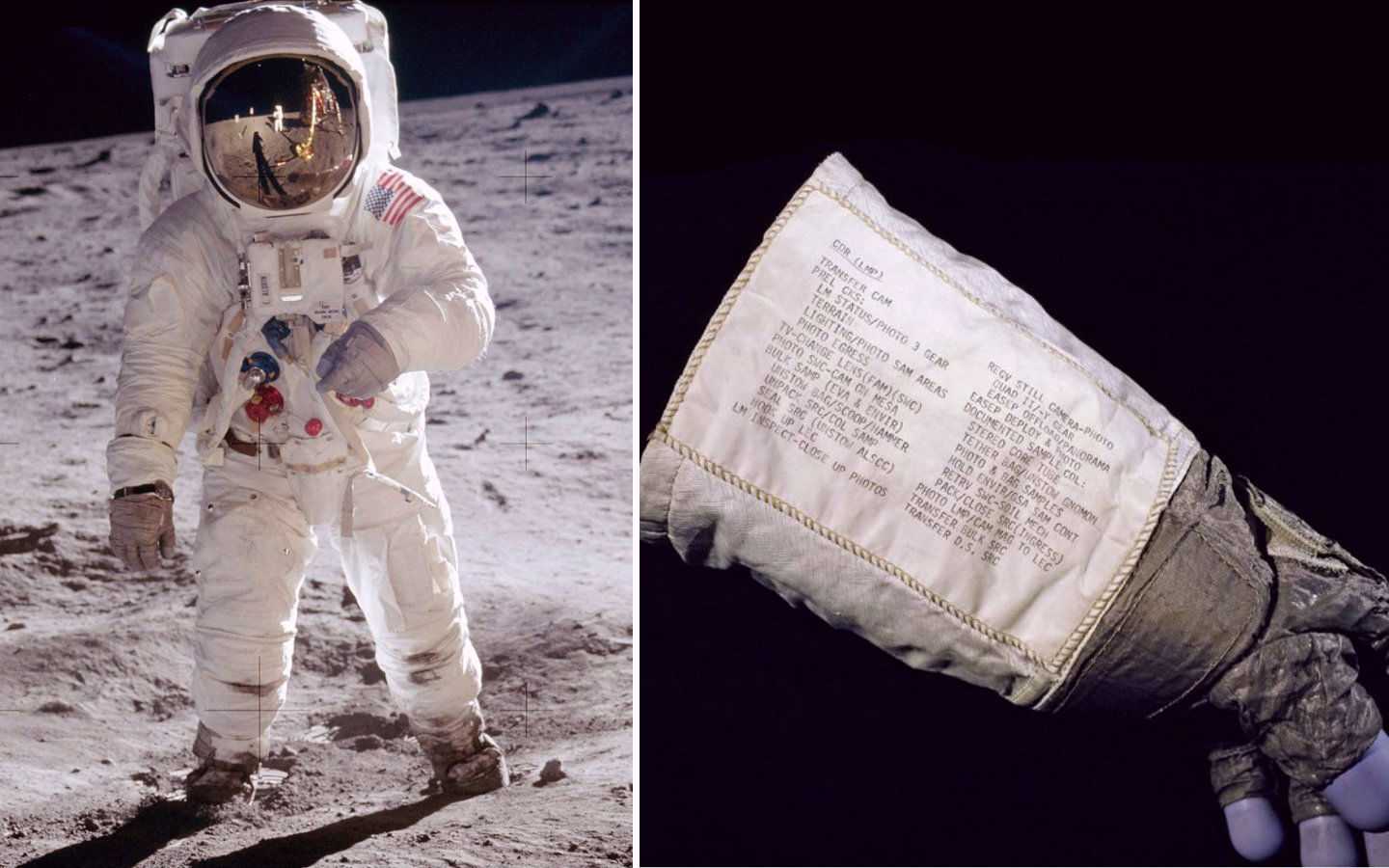
Checklists even covered their spacesuits, for example, the left gloves of Armstrong and Aldrin.
Armed with the legendary pressurized-ink Fisher Space Pen, produced through a $1 million private R&D program, astronauts made regular updates to the procedures and kept their checklists up-to-date throughout their missions.
Ground personnel also had access to the crew's checklists, often annotating them with messages, jokes, their signatures – and whimsical 'Easter eggs'.
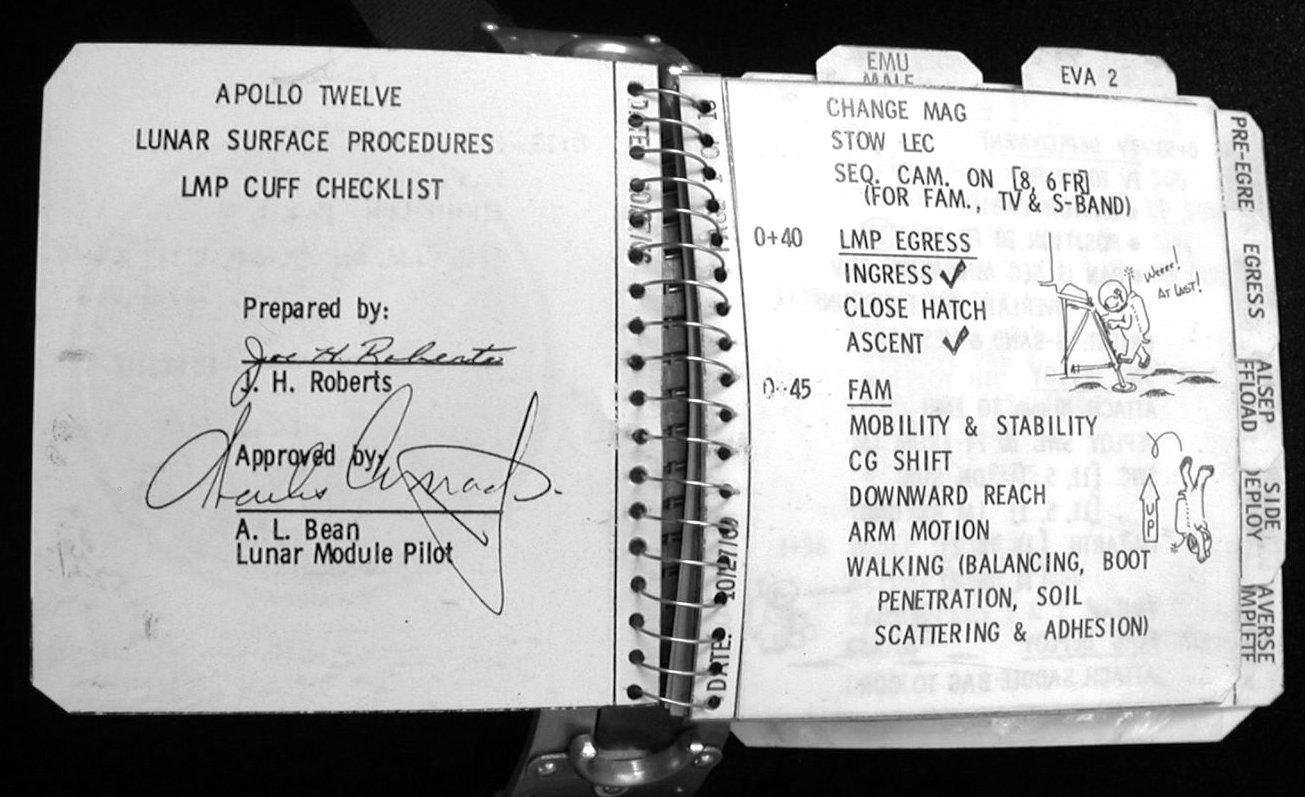
For example, the cuff checklists used by the Apollo 12 astronauts were adorned with Snoopy cartoons alongside black-and-white prints of Playboy models. Conrad and Bean later said that they hadn’t noticed the Playmates until well into their moonwalk – and thoroughly enjoyed them.
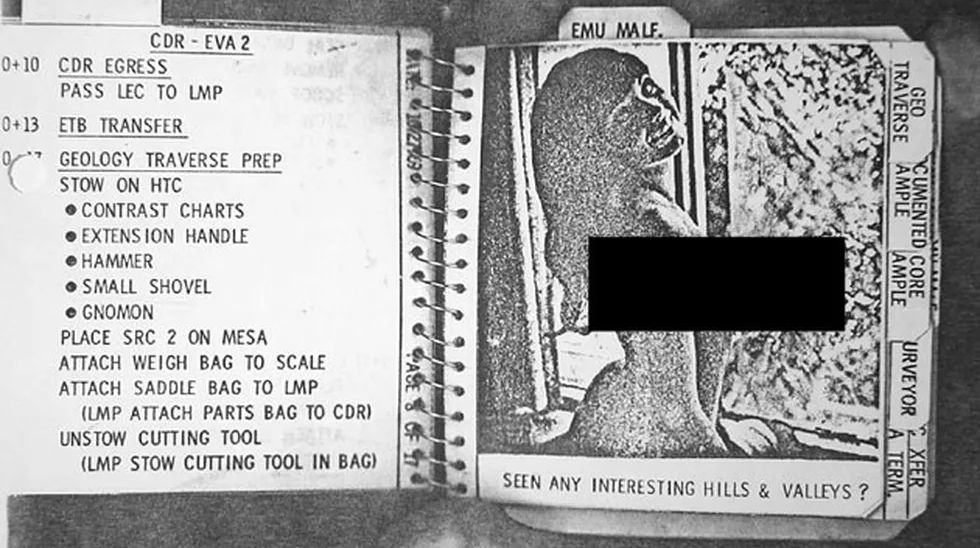
Checklists continue to be widely used at NASA. “We use checklists in everything from procedures in system test plans to reminders on how to restore backups to our computer, says David Oberhettinger, the Chief Knowledge Officer of the Jet Propulsion Lab. “With so many risks that are 'unknown unknowns' in NASA programs and projects, checklists assure adherence to routine practice and help limit risk to the more novel elements of a mission.”
Our heads are for having ideas, not holding them
But most of us don't fly spacecrafts, our work doesn't involve life-and-death decisions, and our dashboards don't have hundreds of buttons and switches.
We do love our to-do lists, crossing off items with almost neurotic satisfaction. But process checklists and manuals? They seem dehumanizing and interfere with our creative work. Being forced to follow a checklist, especially for seemingly obvious and straightforward tasks that we've done a thousand times, feels redundant and even insulting. We should be trusted to do our job without having to waste our time repeatedly checking off boxes.
The cognitive overload of the knowledge economy
So why do we fail so often? In his book The Checklist Manifesto: How to Get Things Right, Atul Gawande explains that there are two main factors that we have control over – ignorance and ineptitude. We fail because we either don't have the information to perform a task or, if we do have the information, we fail to apply that information consistently and correctly.
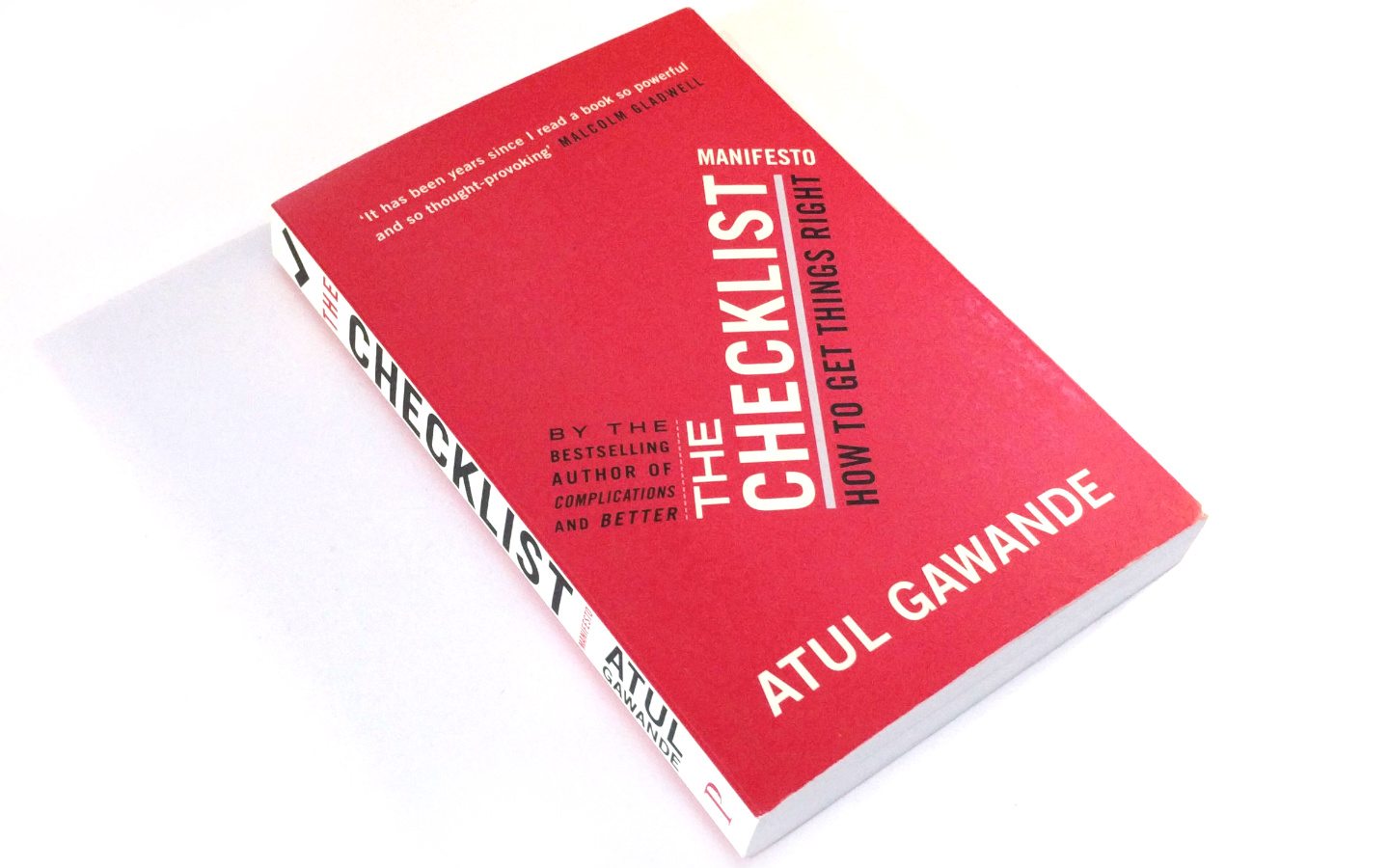
For most of history, we’ve failed because of ignorance. We had only a partial understanding of how things worked. In the modern age, however, we know more than ever before, and the information has never been so readily available. But the complexity of the problems we are solving on a daily basis has also increased exponentially.
It's not that we are stupid or lack the aptitude – human brains can hold up to 4.7 million books in their memory. The real problem is retrieving that information accurately and when we need it. It's a problem of effort and attention.
This is where checklists come into play.
The holy grail of checklists
The checklist of all checklists may be the one created by Dr. Peter Pronovost of the Johns Hopkins University School of Medicine. Having observed that intravenous lines used to deliver medication often became infected, resulting in thousands of deaths per year, Pronovost compiled a simple five-step checklist:
Wash their hands with soap.
Clean the patient’s skin with chlorhexidine antiseptic.
Put sterile drapes over the entire patient.
Wear a sterile mask, hat, gown and gloves.
Put a sterile dressing over the catheter site.
The results were dramatic: the infection rate went from 11% to almost zero.
When Michigan ICUs put the checklist into practice over a period of 18 months, line infections were virtually eliminated, saving about 1,500 lives and an estimated $175 million in hospital expenses.
According to The New Yorker, Pronovost's “work has already saved more lives than that of any laboratory scientist in the past decade”. In 2008, Time named Pronovost one of the 100 most influential people in the world.
A new study, published in April of 2019 in the British Journal of Surgery, offers further evidence of the transformative power of checklists. According to the study of 6.8 million surgical patients, since Scotland implemented the checklist in 2008, surgery mortality rates have dropped by 37%.
Stop worrying and learn to love the checklist
No amount of wisdom in a given field makes us immune to forgetfulness. Implementing a checklist lightens our cognitive load, frees up our attention and allows us to focus that hard-earned knowledge on higher level problems.
Here are just some of the reasons why we use checklists at Nuclino:
Checklists act as a check against our ego.
Stupid simple stuff is often so obvious, that we feel that it’s not as important as the challenging and “sexy” work. But in reality, it’s often our most basic tasks that can spell the difference between success and disaster.
Checklists free up our mental RAM.
Though many scoff at checklists and see them as constraining, they can be liberating. We don’t have to bother remembering to do the basics because there’s a checklist for that. Offloading that need frees up the brain to concentrate on the important stuff.
Checklists get stuff done.
There’s something about having a checklist that spurs people to get things done. Nothing like the dopamine rush that comes with checking something off! Here's one of the release checklists our own team created for the Nuclino desktop app update:
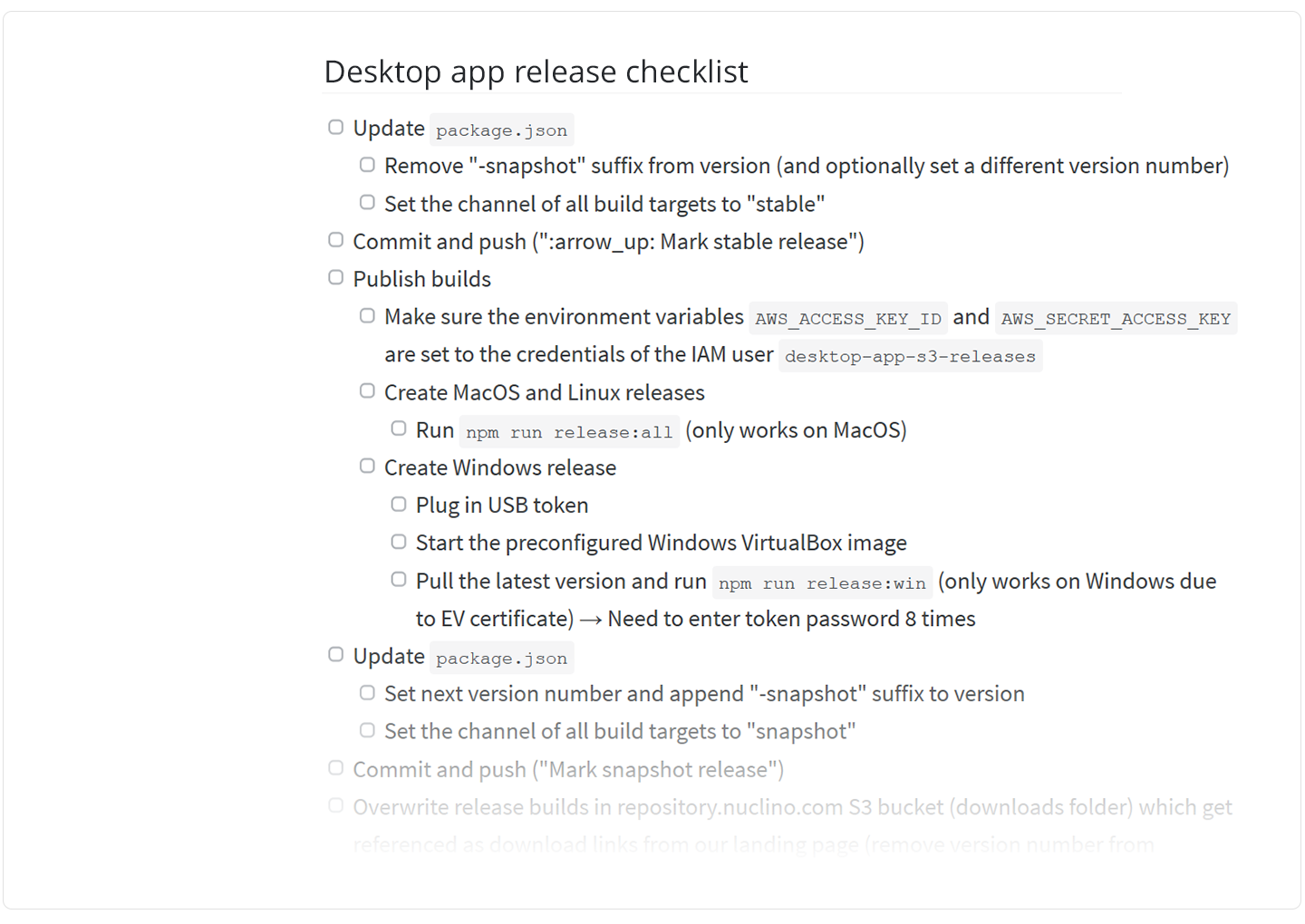
Checklists help contain knowledge within our team.
Experts are known to hoard knowledge and know-how, whether intentionally or not.
But what if they retire or get a new job? Sure, they could spend their last week meticulously documenting all of their workflows and processes for the next person to take over. But what if they get sick and have to leave abruptly? Or are the bridge-burning type and wouldn't want to bother?
Checklists save us time.
Often you can get things done quicker by doing things in a specific order. We try to work out the fastest route for every task and process, put it into a checklist, and stick to it. New team members get going faster as well. For example, here's the checklist we have created in Nuclino to onboard new team members:
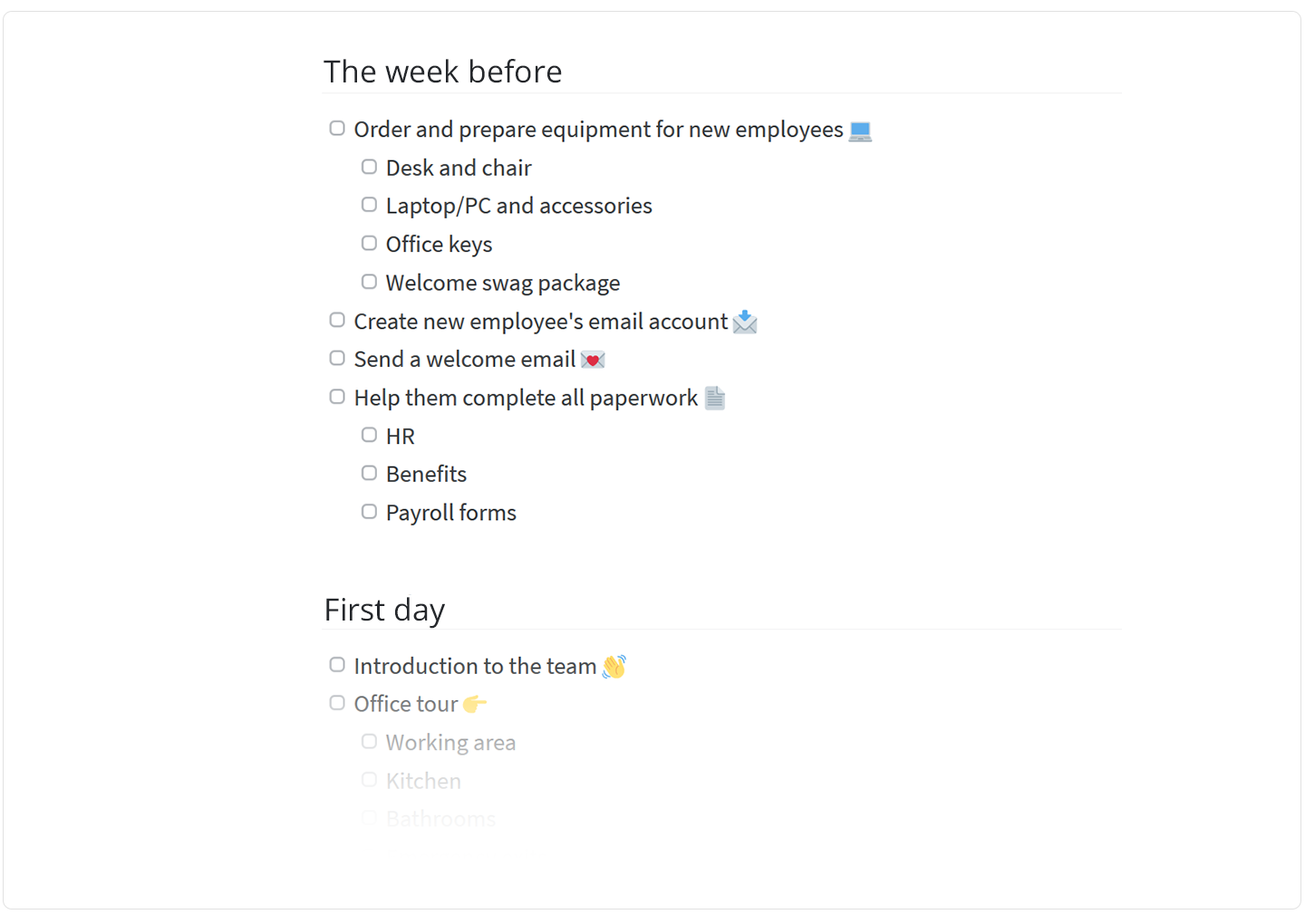
Our checklist for creating checklists
Daniel Boorman, a veteran pilot working for Boeing and the technical lead for the development of the 787’s pilot system of checklists, has worked with the FBI, the World Health Organization, the American Society of Radiation Oncologists, and many more.
The rules that our own team follows when creating checklists were to a large extent inspired by his recommendations:
Investigate your failures.
We start every new checklist by looking for friction points in our routine. They become the basis for the checklist.
Focus on the “stupid” stuff.
A checklist is not meant to be a comprehensive manual. We already know how to do our jobs, so we focus on the basic but essential stuff without trying to include and explain every detail. The shorter the checklist is, the better.
Keep it simple.
The look of the checklist matters as well. It should ideally fit on one page, be free of clutter and unnecessary color (an occasional emoji is a guilty pleasure we allow ourselves to indulge in 😉). It's best to settle on one simple and easily readable font – sans serif is best, according to Boorman, so we use Source Sans Pro at Nuclino.
Decide between a “DO-CONFIRM” or a “READ-DO” checklist.
If the task requires extra precision, we go with a READ-DO checklist, meaning that we read and perform a task on the checklist before we move to the next task. Otherwise, we use a DO-CONFIRM checklist, performing the tasks from memory and then stopping to go through the checklist to verify everything.
Checklists are unlikely to go out of fashion any time soon. As Erich Mahr, assistant chief pilot at Boeing says, “I don’t think the future will hold significant change to the concept of checklists. Technology may change the methodology, but the principle remains the same. It is by far the best tool to contain errors.”